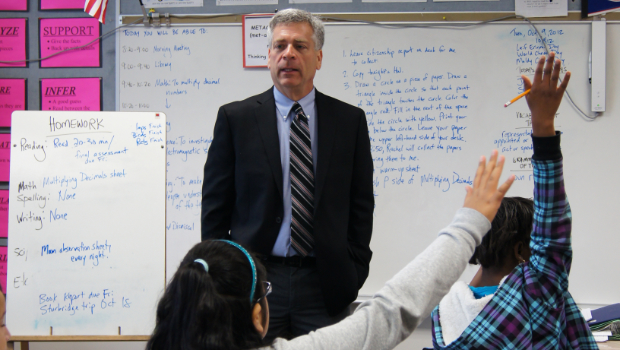By now, every educator can tell the story of how the pandemic has upended teaching and learning. Economic gaps and inequities laid bare. The whiplash of school closures and reopenings fueled by outbreaks and quarantines. The constant toggling between remote and in-person students, a model that has left educators, students, and parents alike depleted.
While remote teaching has had its challenges, dual teaching—the practice of teaching virtually and in-person at the same time—has proven unsustainable, and CEA has launched a statewide legislative campaign to put an end to it. (Watch your home mailbox this week for postage-paid postcards to sign and send to lawmakers, urging them to end this disruptive, inequitable practice.) Meanwhile, as districts prepare for what education could look like next school year, Cromwell offers a model that could work if virtual learning continues to play a role.
2013 Connecticut Teacher of the Year Blaise Messinger explains.
“My administration made the decision to offer a remote-only class for Cromwell Middle School students who opted out of in-person learning for the year,” says the 22-year veteran, who has spent the current school year teaching remote-only sixth-graders. “They felt that the transition to middle school was such a huge change and challenge for incoming sixth-graders that it would be better for the remote learners to have their own separate class rather than try to deal with several different teachers for the first time.”
Messinger (seen above in a photo from when he was named 2013 Teacher of the Year), who is K-6 certified and had been teaching sixth-grade math and social studies, was assigned to teach all four core academic subjects virtually.
“It’s similar to the way self-contained elementary classrooms work,” he explains. “All my students are learning from home and have been since the start of the school year. I’m also working from home, only with the full-time remote students. They stream into their other classes with the teachers in the building, but they have me for language arts, math, social studies, and science.”
He adds, “There is no question that this setup is much better for me and for my students than a dual teaching model. Those students have struggled much more than my students. I’m able to tailor all the lessons for online students only, and I can create experiences that are effective for distance learners without having to split my attention and simultaneously plan how I will accommodate learners in the classroom. It’s also optimal for remote learners because they have my full attention. I’ve been able to create a real classroom community and give each student individual consideration. Feedback from students and parents has been overwhelmingly positive.”
Indeed, when he was named Connecticut Teacher of the Year seven years ago, students who had participated in his nomination noted how Messinger stressed the value of connecting with them and their classmates and making learning fun.
“All children are aching to learn,” he said. “I believe that the key to unlocking the joy and wonder inherent in all students comes down to the relationship between me and those students and the environment created in the classroom to nurture that bond.” While he could not have imagined a virtual classroom at that time, his teaching philosophy is every bit as relevant in a pandemic environment—if not more so. And advocating for a high-quality learning environment has been an ongoing effort for both CEA and local education associations.
“My local chapter, the Education Association of Cromwell, has been strongly advocating for teachers all year,” Messinger says.
Become part of the advocacy that has resulted in critical protections for educators and students during these challenging times. Join the effort to end dual teaching.







